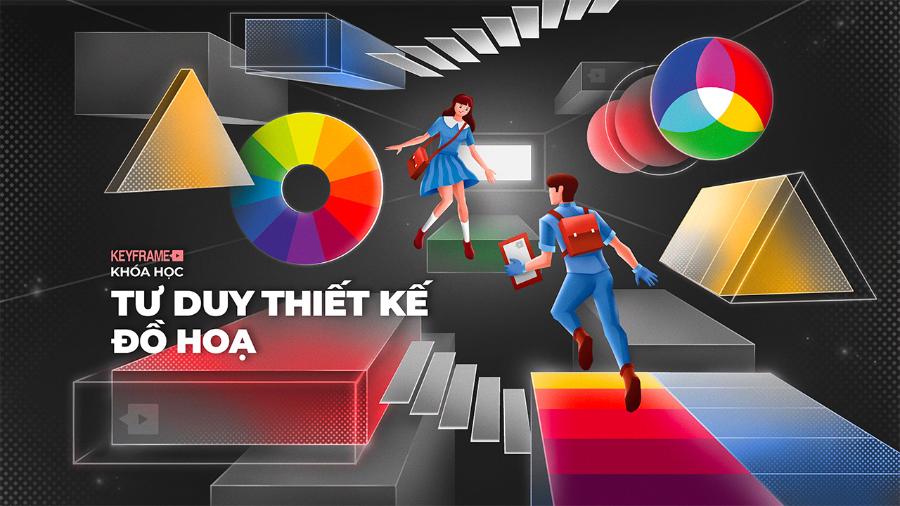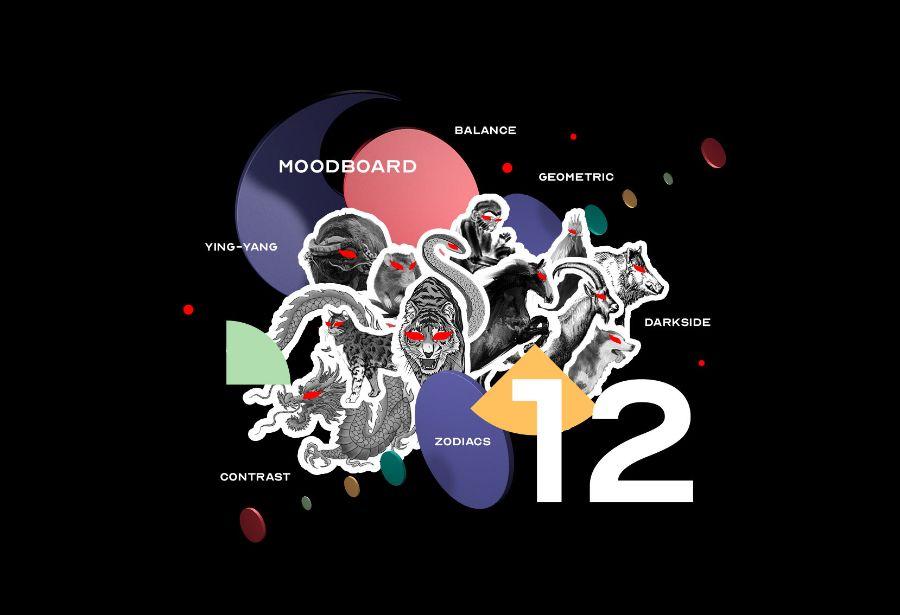Best Selling Products
Top 3D Design Courses For Beginners
Nội dung
- 1. What is 3D Design?
- 2. Why is 3D Design Important?
- 3. Steps to Start Learning 3D Design for Beginners
- 3.1. Define Your Goals
- 3.2. Choosing the Right 3D Design Software
- 3.3. Get Familiar With The Basics
- 3.4. Practice Is The Key
- 4. Best 3D Design Courses For Beginners
- 4.1. Blender 3D Course: Beginner's Guide (Udemy)
- 4.2. Autodesk Maya Course: From Basic to Advanced (Coursera)
- 4.3. Basic 3D Design Course with SketchUp (LinkedIn Learning)
- 4.4. Tinkercad Course: 3D Design For Beginners (Tinkercad)
- 5. Conclusion
Discover how to start learning 3D design effectively with 3D design courses for beginners. Read the article to get an overview and choose the right course.

Nowadays, 3D design is becoming more and more important and popular in many fields, from architecture, video games, movies to marketing and manufacturing. However, getting started with 3D design can be confusing and difficult for many people, especially for those who are new to this technology. In this article, sadesign will guide newbies on how to start learning 3D design effectively and introduce the best 3D design courses for beginners, helping you have a solid foundation to develop in this industry.
1. What is 3D Design?
3D design, also known as 3D modeling, is the process of creating three-dimensional objects or images in virtual space, using specialized software. This model can be used in fields such as video games, animation, architectural modeling, or even in product manufacturing. The strong development of modern technology has created many tools and software to support 3D design, helping users easily create and work with complex models.
.jpg)
To create 3D design products, professionals need to have skills in using specialized software, understand elements such as geometry, lighting, texture, materials and the ability to render (export final images) 3D models.
This is an important field in many industries such as architecture, film, video games, advertising and manufacturing. 3D designers use this technique to simulate objects, spaces or ideas in a realistic and vivid way, making it easy to present and edit before putting them into actual production. With the development of technology, 3D design is becoming more and more popular and plays an important role in optimizing workflow and improving product quality.
2. Why is 3D Design Important?
3D design has opened up many new opportunities in various fields. With the continuous advancement of technology, the application of 3D design is no longer limited to the entertainment industry but has spread to industries such as medicine, manufacturing, education and product design. Anyone who wants to join the creative industry or work in fields that require graphic skills cannot ignore 3D design skills.
.jpg)
Not only does 3D design create vivid images, it also helps optimize the production process, minimize risks when testing products, and most importantly, provide intuitive experiences for users.
3D design plays an extremely important role in many fields today thanks to its ability to realistically and detailedly recreate ideas, products or spaces before they are implemented in reality. This technology not only saves time and costs by predicting and correcting potential problems, but also brings unlimited creative opportunities to designers. Especially in industries such as architecture, manufacturing, entertainment and medicine, 3D design facilitates improving product quality, enhancing user experience and promoting innovation. With the continuous development of technology, 3D design increasingly affirms its core role in realizing ideas and building optimal solutions for the future.
3. Steps to Start Learning 3D Design for Beginners
The steps to take to learn design for beginners are as follows:
3.1. Define Your Goals
Before you start learning 3D design, it’s important to be clear about your goals. You may want to work in fields like video games, film, or even architecture. Different industries will require different skills and software tools, so knowing your goals will help you choose the right learning path. Having a clear goal and passion will help you stay motivated and focused during your studies.
Research the application areas of 3D design such as architecture, interior design, manufacturing, or entertainment to shape a specific direction. Then, create a detailed study plan with steps from basic to advanced, and practice persistently to improve your skills. Take the time to research and create a detailed study plan to ensure your journey starts on the right and effective way.
3.2. Choosing the Right 3D Design Software
There are many 3D design software on the market today, from free tools to high-cost professional software. Some popular software that beginners can refer to include:
Blender : This is a free, open-source software, widely used in the 3D design community. Blender is very flexible, can perform many tasks from modeling, modeling, to rendering and animation.
Autodesk Maya : A very powerful software used in the film and game industries. However, Maya is expensive and complicated for beginners.
SketchUp : This is an easy-to-use software and is very suitable for designing architectural and interior models. With an intuitive interface, SketchUp helps learners get acquainted with 3D design easily.
Tinkercad : This is a free software specially designed for beginners. Tinkercad is simple and easy to use, suitable for creating simple models.
You should also consider the software’s compatibility with your operating system, the accompanying documentation, and the support community. Choosing the right software will not only help you get familiar with the basic tools easily, but also create a solid foundation for developing your 3D design skills in the future.
3.3. Get Familiar With The Basics
To start learning 3D design, beginners need to be familiar with the basics, including understanding fundamental concepts such as 3D space, coordinates, geometry, and lighting. To be able to create 3D models, you need to master basic concepts such as: Modeling, lighting, texturing, and rendering. Spending time learning about these elements will give you a comprehensive view of the 3D design process.
Next, you should learn about popular 3D design software such as Blender, Autodesk Maya or 3ds Max to choose the right tool for your needs and goals. Familiarizing yourself with the interface, basic tools and how to operate the software is an important step to build a solid foundation.
At the same time, you should also refer to learning materials, video tutorials and join 3D design communities to exchange experiences and receive support. Most importantly, practice persistently and start with small projects to gradually develop skills and creativity.
3.4. Practice Is The Key
One of the best ways to learn 3D design is to practice regularly. You can start with small projects, such as creating simple models, and then gradually experiment with more complex projects. As you practice, you will gradually grasp the tools, techniques, and how to use the software effectively.
.jpg)
Start with small, simple projects and gradually increase the complexity as you gain confidence. Persistence and creativity will take you far in your 3D design journey.
4. Best 3D Design Courses For Beginners
When you are just starting out with 3D design, taking a course can save you time and help you learn the basics. Here are some quality 3D design courses you can check out:
4.1. Blender 3D Course: Beginner's Guide (Udemy)
The course "Blender 3D: Beginner's Guide" on the Udemy platform is an ideal choice for those who want to explore and get acquainted with the world of 3D graphic design. With well-structured content, the course provides basic knowledge of Blender software, from the interface, tools, to modeling and scene building techniques. This is the perfect start for you to develop your skills in the field of 3D graphics, suitable for both beginners and those who are looking for a solid foundation to further their creative career.
Accordingly, this course will help you get familiar with the software interface, basic modeling tools, how to add lighting and texture to the model. This is a suitable course for those who want to learn 3D design without having to invest too much money.
.jpg)
4.2. Autodesk Maya Course: From Basic to Advanced (Coursera)
The "Autodesk Maya: From Basic to Advanced" course on the Coursera platform is an in-depth learning program designed for those who want to master the skills of using Autodesk Maya software - a leading tool in the field of 3D graphic design, animation and visual effects. The course provides knowledge from basic to advanced, helping students understand the interface, tools, and workflow in Maya, while developing creativity to create high-quality products. This is an ideal opportunity for you to improve your expertise and expand your career potential in the creative industry.
Coursera offers a series of courses on Autodesk Maya, a professional software widely used in the 3D design industry. This course will give you a deep understanding of modeling, animation, lighting, and rendering techniques, providing a solid foundation for those who want to go further in the film or game industry.
4.3. Basic 3D Design Course with SketchUp (LinkedIn Learning)
The "3D Design Basics with SketchUp" course on LinkedIn Learning provides a solid foundation of knowledge for those who want to start their 3D design journey. With well-structured content, the course guides learners on how to use SketchUp software effectively, from basic operations to creating professional 3D models. This is an ideal choice for both beginners and those who want to strengthen their design skills in the modern workplace.
If you want to design simple 3D models for architecture or interior design, this course on LinkedIn Learning is perfect for you. This course will help you get familiar with the basic design tools in SketchUp, so you can create beautiful and detailed 3D models.
4.4. Tinkercad Course: 3D Design For Beginners (Tinkercad)
Tinkercad: 3D Design for Beginners is an in-depth training program that aims to provide the basic knowledge and skills needed to get started with 3D design. With a friendly and easy-to-use interface, Tinkercad is the ideal tool for those new to the field. The course will help students master the basic operations, from creating shapes, editing, to completing 3D models professionally. This is the perfect start for those who want to explore the world of 3D design and creative applications of this technology in their studies, work or personal interests.
Tinkercad offers free courses that will help you get started with 3D design from the very basics. With a simple and easy-to-use interface, this course will help you build a solid foundation before moving on to more complex software.
5. Conclusion
3D design is an exciting and challenging field, but also full of opportunities for those who love creativity and technology. Whether you aim to become a professional in the video game or film industry, or simply want to design 3D models for your own personal enjoyment, starting with the right 3D design courses will save you time and help you learn quickly.












































